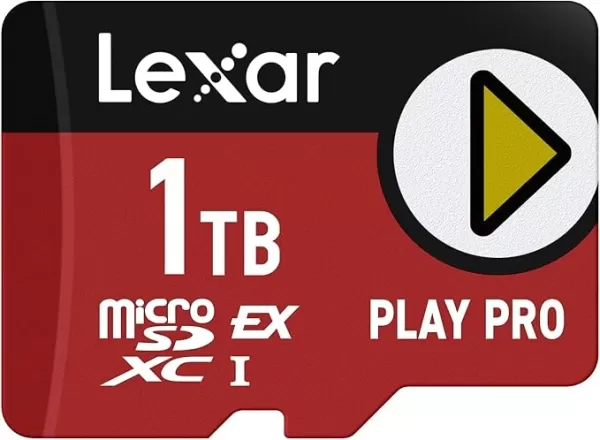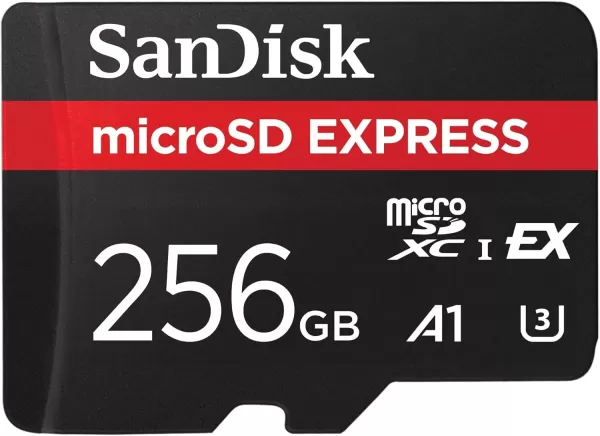Last week, Nintendo unveiled the Nintendo Switch 2, revealing that the new console exclusively supports expansion through MicroSD Express cards. This decision might be frustrating for those with existing MicroSD card collections, but it's a strategic move given the superior speed of MicroSD Express.
MicroSD Express cards, with their ability to interface directly with the device, can achieve read/write speeds comparable to the UFS (Universal Flash Storage) of the Switch 2's internal storage. This advancement ensures that games stored on expansion cards can load just as quickly as those stored internally, albeit at the cost of not being able to use less expensive, non-Express MicroSD cards.
MicroSD vs. MicroSD Express
Over the years, MicroSD cards have seen six different speed ratings evolve. Starting from the initial 12.5MB/s, which seems sluggish by today's standards, speeds have progressively increased. The journey began with SD High Speed at 25MB/s and culminated with SD UHS III, achieving 312MB/s. However, the landscape shifted with the introduction of the SD Express standard by the SD Association five years ago, significantly boosting speeds.
The pivotal difference with SD Express is its use of a PCIe 3.1 interface, as opposed to the slower UHS-I. This PCIe interface, akin to that used by NVMe SSDs, unlocks much higher potential performance. Full-sized SD Express cards can now achieve data transfer speeds up to 3,940MB/s, vastly outpacing older SD cards.
While MicroSD Express cards don't reach the peak speeds of their full-sized counterparts, they still offer impressive speeds up to 985MB/s, which is three times faster than the best non-Express MicroSD cards.
Why Does the Switch 2 Require MicroSD Express?
Though Nintendo typically keeps its hardware decisions under wraps, the rationale behind requiring MicroSD Express cards for the Switch 2 is clear: speed. A game installed on a MicroSD Express card will load significantly faster than on a traditional UHS-I MicroSD card, thanks to the PCIe 3.1 interface. This requirement might soon extend to handheld gaming PCs as well.
With the Nintendo Switch 2's internal storage upgraded to UFS from eMMC, it's logical for Nintendo to ensure its expansion storage matches this speed. Early demos suggest significantly faster load times for games like Breath of the Wild, with improvements ranging from 35% during fast travel, as reported by Polygon, to a 3x initial load time enhancement noted by Digital Foundry. These improvements may be due to the faster internal storage, but could also result from enhanced CPU and GPU capabilities. The key point is that Nintendo requires external storage to keep pace, preventing future games that need faster storage from being bottlenecked by slower SD cards.
Moreover, this move future-proofs the console for even faster storage solutions. Currently, the SD 8.0 Specification enables full-size SD Express cards to reach speeds of 3,942MB/s. While MicroSD Express cards can't yet match this speed, future advancements could see them do so, provided the Switch 2 supports these speeds.
Answer See ResultsMicroSD Express Capacity Options
The adoption of MicroSD Express cards has been slow, but this is expected to change with the Nintendo Switch 2's launch. Currently, options are limited. Lexar offers a single MicroSD Express card in 256GB, 512GB, and 1TB capacities, with the 1TB variant priced at $199.

Lexar Play Pro MicroSD Express
SanDisk, on the other hand, lists only one MicroSD Express card, with a maximum capacity of 256GB, matching the Switch 2's internal storage. By the time the Nintendo Switch 2 hits the market, it's unlikely that many MicroSD Express cards exceeding 512GB will be readily available. However, this situation is expected to improve as companies like Samsung ramp up production of these memory cards.
















